For the things which are seen are temporary,
but the things which are not seen are eternal.
2Corinthians 4:18 (NKJV)
Brief History of JBS
It was in 1873 when the ban of Christianity, which had persecuted Christians for more than 200 years, was lifted. However, there were Westerners who settled in Japan after the Treaty of Amity and Commerce was signed between Japan and the United States in 1858, and some of them had the desire to bring Christian messages to the people in Japan.
Regarding the Bible operation on a large scale, the National Bible Society of Scotland (NBSS, now called the Scottish Bible Society) set up its branch in Yokohama in 1875, followed by the American Bible Society and the British and Foreign Bible Society in 1876. In 1880, these Bible Societies published the New Testament translated by the committee formed by Protestant missionaries and some Japanese. Seven years later, they completed the Old Testament. Further more, they published the Braille bible(1921) and the Japanese-English New Testament(1881). It should be noted that these Bible Societies were not only publishers of the Bible but also financial supporters for the translation work carried out in those days.
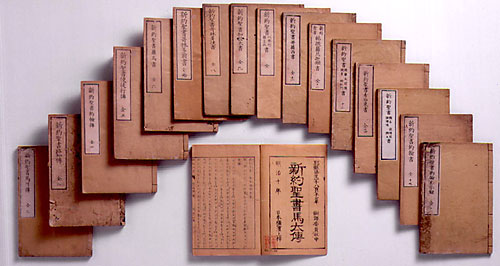
In 1937, with the help of the abovementioned Bible Societies, the Japan bible Society(JBS) was established. The time, however, was very tough for JBS to promote Bible cause. When World WarII broke out in Europe, Japan regarded Britain and the United States as enemies due to a triple alliance formed with Germany and Italy.
Therefore, Christianity was regarded as the enemy's religion and JBS was taken as pro-British and American. Consequently, JBS had no choice but to refuse to receive financial support from them. Bible production and distribution were controlled by the Japanese government and paper for Bible production was never rationed to JBS. The number of Bible distribution in 1945 was only 23, for JBS could only provide Bibles already in stock to those who requested.
After the WWII, Japan was occupied by the United States. Even though the social condition in Japan was very chaotic, Christianity had a chance to revive. Relief activities were undertaken and American missionarieswho used to stay in Japan started reaching out to the Japanese people. 2,390,000 copies of the Japanese Bible were produced in the US and presented to Japanese people during the period between 1945 to 1948, which was followed by "the 10 million Bible distribution movement" from 1949 to 1951.
Since its beginning, JBS had been supported financially by ABS and BFBS. In 1969, however, with Japan's rapid economic growth following the termination of the WWII, JBS decided to become a self-supporting Bible Society. It was a big step taken by JBS, which used to be a "contributed" Bible Society, to become a "contributing" Bible Society after 93 years.
Since then, JBS has not only been serving the Japanese people but also other Bible Societies that are not yet independent.
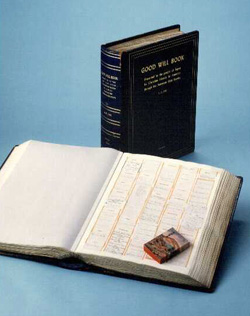
Names of people who helped in the distribution of the Japanese New Testament after WWⅡ
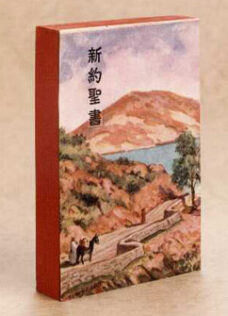
History of Japanese Bible Translation
When the missionaries were admitted to Japan in 1859, there were no Japanese Scriptures available, for the Gutzlaff work of 1837 seems not to have reached Japan and the Bettleheim work in Luchu was completely useless for the main islands. The missionaries had to begin by learning a difficult language and several scripts or syllabaries. As many of the better educated Japanese read Chinese easily, these Scriptures could be used. Another approach suggested for this group was the use of Chinese text with Japanese signs to indicate the order in which the characters were to be read and the grammatical endings. For a few years these editions were used to a considerable extent, but when the Japanese Bible was completed there was no further call for them.
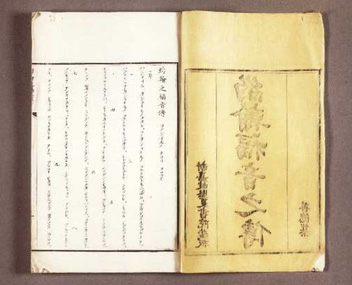
Among the early missionaries were the Rev.J.C. Hpburn, Dr Guido F. Verbeck and the rev. S.R. Brown who immediately devoted their energies to language study. While a number of the missionaries were making attempts at translation even as they were studying the language, the first part of the bible to be printed in Japanese in Japan appeared: the Gospel of Matthew translated by Jonathan Goble, a zealous missionary of the Free Baptists. This edition of Mathew, printed from hand-carved wooden blocks was issued in 1871. He had apealed to American Bible Society in 1865 for money with which to pay writers and printers for Scripture translation, but Dr. Holdich suggested that he join with the other missionaries in the same work so they might produce a non-sectarian version. The translation had many defects but it was the beginning.
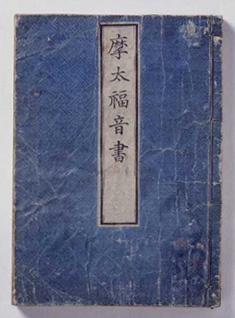
In 1872, Mark was printed (1,000 copies) under the care of Dr.S.R. Brown and Dr. Hepburn, with funds secured locally, and John was being printed, both from hand carved wooden blocks, followed in 1873 by Matthew. Just after Mark and John were printed, a conversation of Protestant missionaries was held in Yokohama and they made a decision of cooperating on the New testament translation work. After 1876, the work went faster and the whole New testament was published in 1880(the Old Testament was published in 1887). When the New testament was published, it was criticized for its translation. A committee of new translation was formed and started translating from the original Greek Bible in 1910. the Taisho revised new testament was completed in 1917and had been used till 1954 when the Japanese Colloquial bible was published. In 1950, Japan bible Society established a committee of the Japanese Colloquial bible believing that the bible is for all people and should be understandable to them. It took about four years to complete the New Testament and one year later the Old testament was published.The biggest news in 1978 was the publication of the Japanese Interconfessional New Testament. The new version is the product of hard work on the part of the Executive Committee and its sub-committee of the Japanese Common Bible Translation. About 70 translators made a great effort and it took 18 years to complete both the New Testament and the Old Testament( the NT published in 1978 was revised): the whole Japanese Interconfessional Bible was completed in 1987 and it is the most popular in Japan at the moment. This Interconfessinal Bible symbolizes the ecumenical movement of Japan.
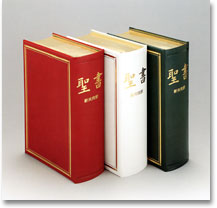
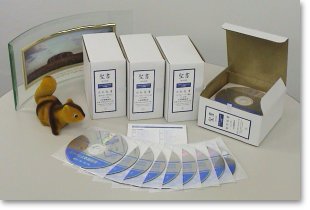
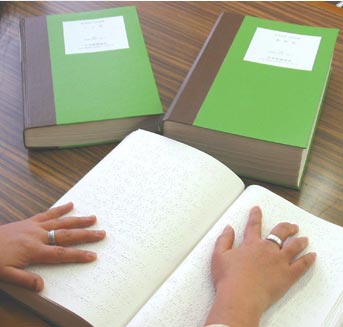
At the December 2009 JBS Board of Directors meeting, it was decided to begin a new translation project, and after eight years of translation work beginning in the summer of 2010, the Japan Bible Society Interconfessional Versionwith Reference and Notes(SIO43)and the Japan Bible Society Interconfessional Versionwith DC with Reference and Notes(SIO43DC) were published in December 2018.It is a second Japanese interconfessional translation from the biblical source texts, aiming to be the standard version of the Bible used in the worship of the Protestant and Catholic churches in Japan.
Features of the new translation:
*This is a "joint translation" involving 18 Catholic and Protestant denominations and organizations.
*The aim is to create a prestigious and beautiful Japanese that is suitable for reading in worship services.
*The results of a quarter of a century of biblical studies since the New Interconfessional Translation are utilized in this translation.
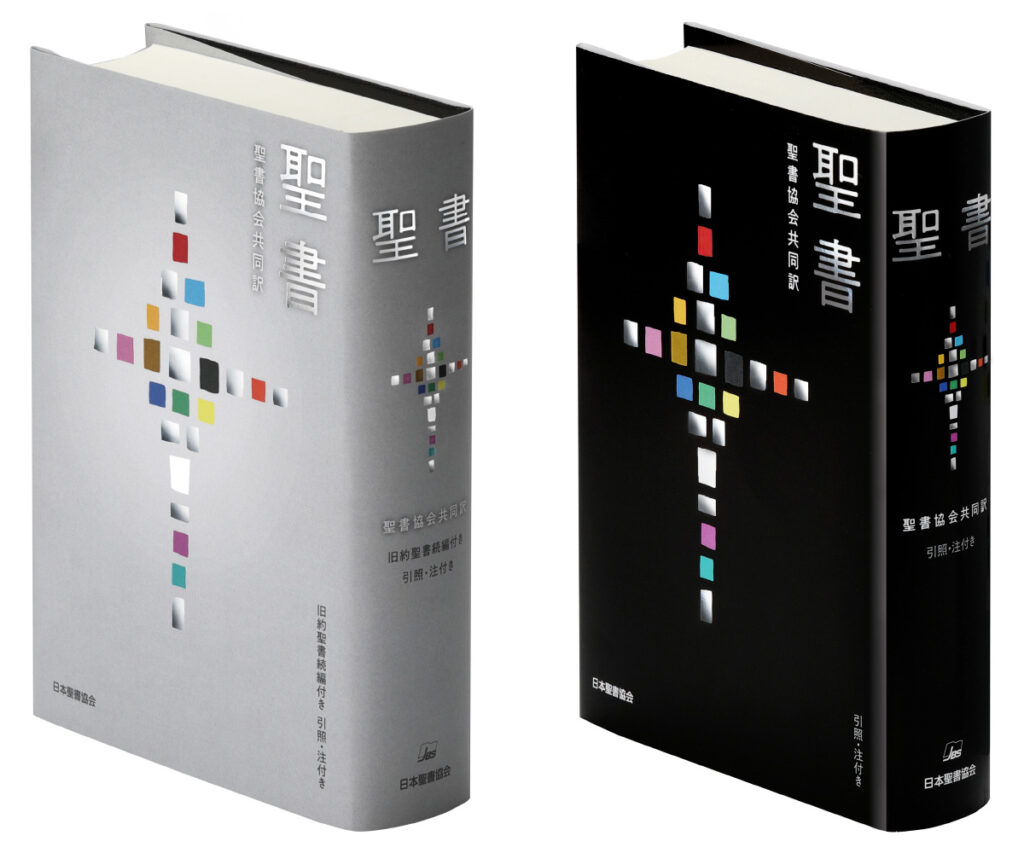
Right: Japan Bible Society Interconfessional Version with Reference and Notes (SIO43)
Left: Japan Bible Society Interconfessional Version with DC with Reference and Notes (SIO43DC)
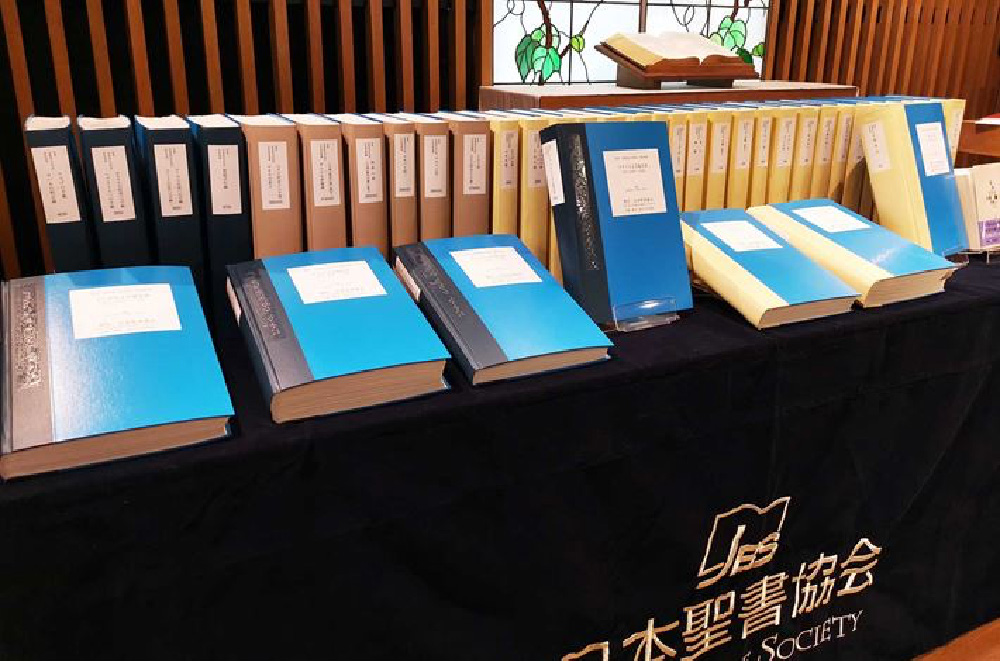
The Japan Bible Society Interconfessional Version of Braille Bible was published all 40 volumes in May 2020.
